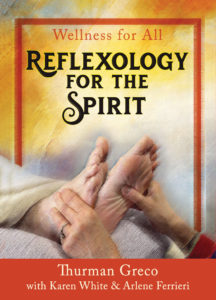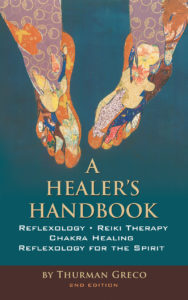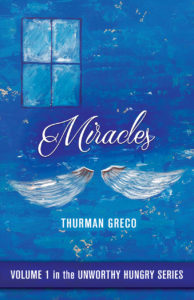Is it a Cold, the Flu, or Coronavirus?
For months we’ve all been reading and hearing about a resurgence of the coronavirus combined with the flu. So…what does this mean?
Every year I hear the same question at the beginning of flu season: HOW DO YOU KNOW WHETHER IT’S A COLD OR THE FLU? This season, the question is a little different: HOW DO YOU KNOW WHETHER IT’S A COLD OR THE FLU OR CORONAVIRUS?
There are some real differences.
Fever is rare with a cold. Fever is common with the flu. It’s usually high and lasts three or four days.
Headaches are rare with a cold but common with the flu.
Cold sufferers may have slight aches and pains. Flu sufferers have definite aches and pains which may be severe.
Extreme fatigue and/or weakness is just not a factor with a cold. Exhaustion is common with the flu – especially at the onset of the illness.
Sore throat, stuffy nose, and sneezing are common with a cold. A person suffering with a cold may have mild symptoms to include a hacking cough. With the flu, these symptoms can become severe.
With colds, treatment includes antihistamines, decongestants. With the flu, the patient needs to consult with a physician about any needed medication.
Coronavirus complicates things.
Many people experience fever as the first symptom of Coronavirus.
The second symptom is often a combination of a cough and muscle pain.
Nausea and vomiting make up the third tier.
These symptoms are usually followed by diarrhea.
And, that’s not all. Some people experience a loss of taste or smell.
And, some people experience deeply reddish-blue toes (chillblains).
Others have headache and dizziness.
The bottom line here is that coronavirus has many symptoms while colds and flu
are much less complicated.
If you suspect coronavirus, go get tested. Waiting around while you try to decide you are sick and contagious or not is not good for you and it’s not good for those around you.
There are several tools at your disposal which can help you early on.
A thermometer is essential. Take your temperature daily.
When I’m out in the community, my temperature is the key to getting into the office where I have an appointment.
The no-touch forehead fever thermometer gun has become ubiquitous on receptionists’ desks wherever I go.
There’s no reason why you shouldn’t take your temperature every morning. Your temperature can accompany your blood pressure reading. You can keep your thermometer gun beside your blood pressure cuff.
Then, you only need one other item: a pulse oximeter. A pulse oximeter estimates the amount of oxygen in your blood.
If you have coronavirus, your pulse oximeter will register a lower oxygen level in your body. This is because with coronavirus, your lungs are inflamed. (Actually, with coronavirus, inflammation is all over your body).
So, if you are concerned about your health because you may become exposed to coronavirus, you can help yourself with your temperature, your blood pressure, and your oxygen level.
If you feel ill, you will help your healthcare professional with these three scores.
For those who aren’t really familiar with an oximeter, it is the little plastic clip placed on your finger when you get your blood pressure measured.
These devices are not that expensive, are easy to use, and you can find an explanatory chart which will explain the meaning of the score.
Whatever you decide, prevention is important. Wash your hands often, wear a mask always when you leave your home, use hand sanitizer and don’t go anywhere around other people if you can help it.
Thanks for reading this blog post. If you liked this article, please forward it to your favorite social media networks.
Thanks again,
Thurman Greco
Envision Balance and Wellness
Envision balance and wellness, homeostasis, or whatever you want.
After including reflexology in your life, the most important thing you can do to bring about homeostasis is to become aware of the path you are now on..
We’re never going to get where we need to go unless we know:
where we’re going,
how we’re going to get there,
what we’re going to do when we arrive. .
This may seem like a subject that doesn’t belong in a reflexology text book, but it really does. If you’re going to help people get to a better place health wise, they need to know where they are going. Not everyone knows about setting goals. As you teach them goal setting they’ll envision the balance and wellness which is best for themselves and their health. And, you, likewise will benefit from setting your own goals.
Learning the importance of how to envision balance and wellness is a good start.
Sometimes, client partners come to a reflexologist, massage therapist, or whomever. After a few visits they begin to feel better and forget why they came in the beginning. Then they stop coming. Without lecturing, teach them that energy follows intent.
Your client partners need to see Reflexology for the Spirit as a process, not a pill. Keep them (and yourself) focused on what you find as you reflex their feet. You do this when you learn, gently, what is happening in their lives and their visits to other healthcare professionals.
Review, periodically, how their feet have changed, and how these changes affect their health in general as they envision balance and wellness.
You can keep your client partners focused on the goal if you know what it is. So, an important question to ask during the first visit is “Why did you come today? And, why not 6 months ago? Or 2 months ago?”
When you can get the answer to that question, you’ll both be on the way to balance and wellness (homeostasis) through a health goal.
Many healthcare professionals recognize health red flags. These flags differ from professional to professional. They can be
test results
client appearance
client remarks.
Red flags for a Reflexology for the Spirit practitioner include:
fatigue
loss of appetite
fever
pain
itching
boils
irritation
inflammation
headaches
feeling jumpy or uneasy
coated tongue
halitosis
colitis
sinusitis
stomach ulcers
canker sores
boils
cancer
Many of your client partners may have multiple issues.
Each individual is unique. But, homeostasis is a goal that all can seek.
When this happens, the body is in a good health balance.
Disease is a sign that the flow toward homeostasis has reversed. So, the red flag words become markers teaching how far away from homeostasis the body has drifted.
You, as the Reflexology for the Spirit practitioner, are concerned with a person as a whole. You work to create a natural balance that is wellness oriented.
You seek to expand the positive potential for good health in all areas.
Disease prevention is the best medicine.
Thanks for reading this blog/book.
Please refer this article to your preferred social media network.
Please send a comment.
Don’t forget to join the email list.
Thurman Greco
Simplify Your Life – And, That Includes Your Medicine Cabinet
 “Every morning, after we do our yoga, we each take a clove of garlic, chop it up and swallow it whole.” – Sara L. and A. Elizabeth Delaney
“Every morning, after we do our yoga, we each take a clove of garlic, chop it up and swallow it whole.” – Sara L. and A. Elizabeth Delaney
Americans spend billions of dollars yearly on heartburn relievers, stomach coaters, hemorrhoidal preparations, eye drops, tranquilizers, sleeping pills. nose drops, decongestants. The pharmacy shelves are lined with totally worthless items, many of which are expensive. Many of these over-the-counter products may also be health risks for the users.
Whenever I feel that I need something to ease some type of distress, I get a reflexology session or Reiki therapy session and then, if I still feel like I need something, I take one of two products: aspirin or garlic.
For me, aspirin is a true miracle drug. I doubt seriously if it would pass FDA testing and even get on the market if it were introduced today. It’s my drug of choice on most everything. For me, if aspirin and/or reflexology doesn’t help…it’s time to call the physician. I usually give the aspirin and reflexology 1 day’s chance before I call her. (And, I rarely call her.)
Aspirin is a respected pain reliever.
Aspirin is thought by many to prevent heart attacks and strokes.
Aspirin is used as a fever reducer.
Aspirin is used to stop aches and inflammation.
Garlic is the other indispensable item in my arsenal. Garlic is a true wonder drug which can be eaten raw, cooked, crushed, or chopped. It can also be taken as a supplement.
Like aspirin, scientists aren’t sure what makes it the miracle worker it is. What many professionals agree on, however, is that garlic is the best tonic out there.
Tests have shown that garlic eaters have less stomach and colon cancer.
Tests have shown that garlic lowers cholesterol
Tests have shown that garlic lowers blood pressure.
Tests have shown that garlic helps prevent heart attacks.
Tests have shown that garlic improves brain function.
Tests have shown that garlic acts as an antianxiety drug.
Tests have shown that garlic has antiaging properties.
So…if garlic does all these things, how should it be taken? Garlic can be taken fresh, powdered, or dried. Books and magazine articles claim garlic supplements have the same chemicals as fresh garlic and don’t cause bad breath. My experience with several different kinds of garlic pills is not that positive. I get garlic breath from the pills as well as from eating fresh garlic.
Cooked garlic is milder than raw and also is probably not as effective as the raw. (That’s my opinion, anyway.)
So, how much garlic is too much? Any product or food which claims to be therapeutic can be overdosed. Eating more than three raw garlic cloves daily has been known to cause gastric distress. If you’re taking the supplements, limit your intake to what the manufacturers recommend.
Thank you for reading this blog/book.
Please share this article on your preferred social media.
Please send a comment.
Peace and food for all.
Thurman Greco
Books tell us that
7 Levels of Disease – a New (Very Old) Way to Think About Disease
So often, when we visit a healthcare professional, we want the whole body, the physical, mental, emotional, and spiritual, to be considered. Instead, a portion of the body is considered.
Fortunately, this attitude is changing. More and more people are receiving healthcare for the whole person.
Healthcare for the whole person requires a different outlook, attitude. It sometimes requires that we return to a much older model of wellness or illness, as it were.
I offer here a 7-point scale:
Level one is the lowest on the scale. The word for level one is fatigue. If your client partner comes to you complaining of fatigue or loss of appetite only, this person is experiencing the lowest level of disease. As you offer a Reflexology for the Spirit session, try to find out why the person is tired. Has s/he been burning the candle at both ends? What is happening here?
Level two is fever. Try to find out what is causing the fever. Does your client partner even know? How does the person know s/he has fever? How long has it been high? What times of the day is it high? When is it lowest?
Level three is irritation. The operative words here are: headaches, itching, feeling jumpy or uneasy, coated tongue, halitosis. What are the best ways to deal with these conditions?
Level four is inflammation to include colitis, sinusitis, gum disease, etc. Is s/he doing anything to treat these conditions?
Level five is ulceration. As in stomach ulcers or canker stores.
Level six is induration. That is an encapsulated group of toxins. An induration is a health issue that a person’s body has built a wall around. Essentially, the body is saying: “Toxins, I’m not going to deal with you now. I’m going to close you in and deal with you later.”
Level 7 is cancer.So…we go from fatigue to cancer. All these levels are important. The issues at each level must be addressed and treated…not ignored. They are all connected.
Through regular Reflexology for the Spirit sessions, we can address these issues to facilitate homeostasis. And, these conditions are all valid reasons to visit a physician. The reflexologist works on a regular basis to address the whole person and facilitate homeostasis.
Thank you for reading this blog/book. If you have any questions or comments, please contact me.
As always, this post comes to you from my healing space in Woodstock, NY
Peace and food for all
Thurman Greco










